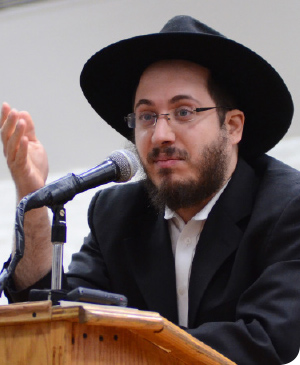This Shabbos we will be reading the Torah portion of Behar. The word “Behar – on the mountain” refers to the giving of the Torah on Har Sinai. The first topic in the Parsha is the laws of Shmita. On the very first Pasuk (25:1), Rashi comments: “What [special relevance] does the subject of Shmita [the “release” of fields in the seventh year] have to Mount Sinai? Were not all the commandments stated at Sinai? However, [this teaches us that] just as the mitzva of Shmita and its general principles and its finer details were all stated at Sinai, likewise, all of them were stated – their general principles [together with] their finer details – at Sinai
 This concept, that everything in Torah comes from Sinai, is very much connected to the Mitzva of Hakhel. The Torah states (D’varim 31:10): “Then, Moshe commanded them saying, ‘At the end of [every] seven years… you shall read this Torah before all Israel, in their ears. Assemble the people – the men, the women, and the children, and your stranger in your cities – in order that they hear, and in order that they learn and fear the L-rd, your G-d, and they will observe to do all the words of this Torah.’”
This concept, that everything in Torah comes from Sinai, is very much connected to the Mitzva of Hakhel. The Torah states (D’varim 31:10): “Then, Moshe commanded them saying, ‘At the end of [every] seven years… you shall read this Torah before all Israel, in their ears. Assemble the people – the men, the women, and the children, and your stranger in your cities – in order that they hear, and in order that they learn and fear the L-rd, your G-d, and they will observe to do all the words of this Torah.’”
When explaining the purpose of this special mitzva, the Rambam (Hilchos Chagiga 3:6) writes: “Converts who do not understand are obligated to concentrate their attention and direct their hearing, listening with reverence and awe, rejoicing while trembling as on the day the Torah was given at Sinai. Even great Sages who know the entire Torah are obligated to listen with exceedingly great concentration to the king read the Torah during Hakhel. One who is unable to hear should focus his attention on this reading, for Scripture established it solely to strengthen the true faith. He should see himself as if he was just now commanded regarding the Torah and heard it from the Almighty. For the king is an agent to make known the word of God.”
This idea of Hakhel – reliving the giving of the Torah on Har Sinai – is especially relevant as we prepare ourselves for the holiday of Shavuos, the holiday on which we celebrate the original giving of the Torah. The Rebbe (Toras Menachem 5748 Volume 3 p. 336) encourages us to continue putting a focus on Hakhel gatherings on Shavuos, especially for children. The Rebbe encourages us to bring and gather all children to hear the Aseres HaDibros being read in shul.
At the original giving of the Torah, all of the Jewish people were there including children. Not only were they present, they were a central part! Before giving us the Torah, G-d demanded a guarantor. The Jews offered him a variety of choices to stand surety, but none were acceptable to G‑d. Then we suggested that the Jewish children could be our guarantors. This proved acceptable and He gave us the Torah. They built our past and they guarantee our future!
The unity that is created by such a gathering hastens Moshiach:
Unlike the exodus from Mitzrayim, when only 20% of the Jewish people were redeemed, when Moshiach comes, all Jewish people will be redeemed and brought back to Eretz Yisroel to serve Hashem. This comes through the unity – “Hakhel” – of B’nei Yisroel right before Moshiach. As it is explained, we always say that King Dovid was the son of Yishai. Yishai is the acronym of three Hebrew words “Yachad Shivtei Yisroel – All Jews united together.” When we have “Yishai,” we will be able to give birth and bring “Dovid,” Moshiach who comes from Dovid. May it be now!
Rabbi Avtzon is the Rosh Yeshiva of Yeshivas Lubavitch Cincinnati and a well sought after speaker and lecturer. Recordings of his in-depth shiurim on Inyanei Geula u’Moshiach can be accessed at http://www.ylcrecording.com.